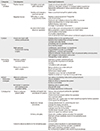Abstract
Purpose
This study was done to evaluate the experience of securing patient safety in hospital operating rooms.
Methods
Experiential data were collected from 15 operating room nurses through in-depth interviews. The main question was "Could you describe your experience with patient safety in the operating room?". Qualitative data from the field and transcribed notes were analyzed using Strauss and Corbin's grounded theory methodology.
Results
The core category of experience with patient safety in the operating room was 'trying to maintain principles of patient safety during high-risk surgical procedures'. The participants used two interactional strategies: 'attempt continuous improvement', 'immersion in operation with sharing issues of patient safety'.
Conclusion
The results indicate that the important factors for ensuring the safety of patients in the operating room are manpower, education, and a system for patient safety. Successful and safe surgery requires communication, teamwork and recognition of the importance of patient safety by the surgical team.
Figures and Tables
References
1. Korea Institute for Healthcare Accreditation. Accreditation program for healthcare organizations[Internet]. 2013. cited 2014 November 5. Available from:https://www.koiha.or.kr/english/index.act?page=AP.
2. National Patient Safety Agency. Patient safety report[internet]. 2003. cited 2015 March 20. Available from: http://www.nrls.npsa.nhs.uk/report-a-patient-safety-incident/.
3. Kirk S, Parker D, Claridge T, Esmail A, Marshall M. Patient safety culture in primary care: developing a theoretical framework for practical use. Qual Saf Health Care. 2007; 16(4):313–320. DOI: 10.1136/qshc.2006.018366.
4. Kizer KW. The new VA: a national laboratory for health care quality management. Am J Med Qual. 1999; 14(1):3–20. DOI: 10.1177/106286069901400103.
5. Poore SO, Sillah NM, Mahajan AY, Gutowski KA. Patient safety in the operating room: I. Preoperative. Plast Reconstr Surg. 2012; 130(5):1038–1047. DOI: 10.1097/PRS.0b013e31826945d6.
6. Steelman VM, Graling PR, Perkhounkova Y. Priority patient safety issues identified by perioperative nurses. AORN J. 2013; 97(4):402–418. DOI: 10.1016/j.aorn.2012.06.016.
7. Gurses AP, Kim G, Martinez EA, Marsteller J, Bauer L, Lubomski LH. Identifying and categorising patient safety hazards in cardiovascular operating rooms using an interdisciplinary approach: a multisite study. BMJ Qual Saf. 2012; 21(10):810–818. DOI: 10.1136/bmjqs-2011-000625.
8. Kwon SB, Cho KS, Park YS, Kim DO, Yi YJ, Lee EH. An analysis of nursing work of operating room nurses. J Korean Acad Nurs Adm. 2008; 14(1):72–84.
9. Gibbs VC. Patient safety practices in the operating room: correctsite surgery and nothing left behind. Surg Clin North Am. 2005; 85(6):1307–1319. DOI: 10.1016/j.suc.2005.09.007.
10. Jang HY. Analysis of core nursing interventions according to the importance and the performance perceived by operating room nurses[master's thesis]. Seoul: Seoul National University;2007. 1–63.
11. Kim GH, Cho BJ. Identification of nursing interventions in the operating room using the Perioperative Nursing Data Set (PNDS). J Korean Acad Fundam Nurs. 2003; 10(3):361–370.
12. Kim SK, Lee HJ, Oh EG. Perceived level and associated factors of patient safety culture among health care providers in an operating room. J Korean Clin Nurs Res. 2010; 16(2):57–67.
13. Lee YA. Study on worker's perception of patient safety culture in a general hospital[master's thesis]. Seoul: Yonsei University;2009. 1–83.
14. Strauss A, Corbin JM. Basics of qualitative research: grounded theory procedures and techniques. Thousand Oaks, CA: Sage Publications;1990.
15. Patton MQ. Qualitative evaluation and research methods. 2nd ed. Thousand Oaks, CA: SAGE Publications;1990.
16. Guba EG, Lincoln YS. Effective evaluation: improving the usefulness of evaluation results through responsive and naturalistic approaches. San Francisco, CA: Jossey-Bass;1981.
17. Sandelowski M. The problem of rigor in qualitative research. ANS Adv Nurs Sci. 1986; 8(3):27–37. DOI: 10.1097/00012272-198604000-00005.
18. Kim MR. Concept analysis of patient safety. J Korean Acad Nurs. 2011; 41(1):1–8. DOI: 10.4040/jkan.2011.41.1.1.
19. Lee KH, Lee YS, Park HK, Rhu JO, Byun IS. The influences of the awareness of patient safety culture on safety care activities among operating room nurses. J Korean Clin Nurs Res. 2011; 17(2):204–214.
20. Kim SJ. Relationship between operation nurses' perception on the patient safety culture and their safety care activities[master's thesis]. Pusan: Inje University;2012. 1–46.
21. Alfredsdottir H, Bjornsdottir K. Nursing and patient safety in the operating room. J Adv Nurs. 2008; 61(1):29–37. DOI: 10.1111/j.1365-2648.2007.04462.x.
22. Lingard L, Espin S, Whyte S, Regehr G, Baker GR, Reznick R, et al. Communication failures in the operating room: an observational classification of recurrent types and effects. Qual Saf Health Care. 2004; 13(5):330–334. DOI: 10.1136/qshc.2003.008425.
23. Manser T. Teamwork and patient safety in dynamic domains of healthcare: a review of the literature. Acta Anaesthesiologica Scandinavica. 2009; 53(2):143–151. DOI: 10.1111/j.1399-6576.2008.01717.x.
24. Makary MA, Sexton JB, Freischlag JA, Holzmueller CG, Millman EA, Rowen L, et al. Operating room teamwork among physicians and nurses: teamwork in the eye of the beholder. Journal of the American College of Surgeons. 2006; 202(5):746–752. DOI: 10.1016/j.jamcollsurg.2006.01.017.
25. Kaafarani HM, Itani KM, Rosen AK, Zhao S, Hartmann CW, Gaba DM. How does patient safety culture in the operating room and post-anesthesia care unit compare to the rest of the hospital? The American Journal of Surgery. 2009; 198(1):70–75. DOI: 10.1016/j.amjsurg.2008.09.017.
26. Davenport DL, Henderson WG, Mosca CL, Khuri SF, Mentzer RM. Risk-adjusted morbidity in teaching hospitals correlates with reported levels of communication and collaboration on surgical teams but not with scale measures of teamwork climate, safety climate, or working conditions. J Am Coll Surg. 2007; 205(6):778–784. DOI: 10.1016/j.jamcollsurg.2007.07.039.
27. Catchpole K, Mishra A, Handa A, McCulloch P. Teamwork and error in the operating room: analysis of skills and roles. Ann Surg. 2008; 247(4):699–706. DOI: 10.1097/SLA.0b013e3181642ec8.
28. Colla JB, Bracken AC, Kinney LM, Weeks WB. Measuring patient safety climate: a review of surveys. Qual Saf Health Care. 2005; 14(5):364–366. DOI: 10.1136/qshc.2005.014217.
29. OECD/Korea Policy Center. Health-care reform in Korea.[Internet]. 2010. cited 2014 November 5. Available from: http://www.oecd.org/economy/growth/46034907.pdf.
30. Hwang JI, Ahn JH. Teamwork and clinical error reporting among nurses in Korean hospitals. Asian Nurs Res. 2015; 9(1):14–20. DOI: 10.1016/j.anr.2014.09.002.




 PDF
PDF ePub
ePub Citation
Citation Print
Print




 XML Download
XML Download